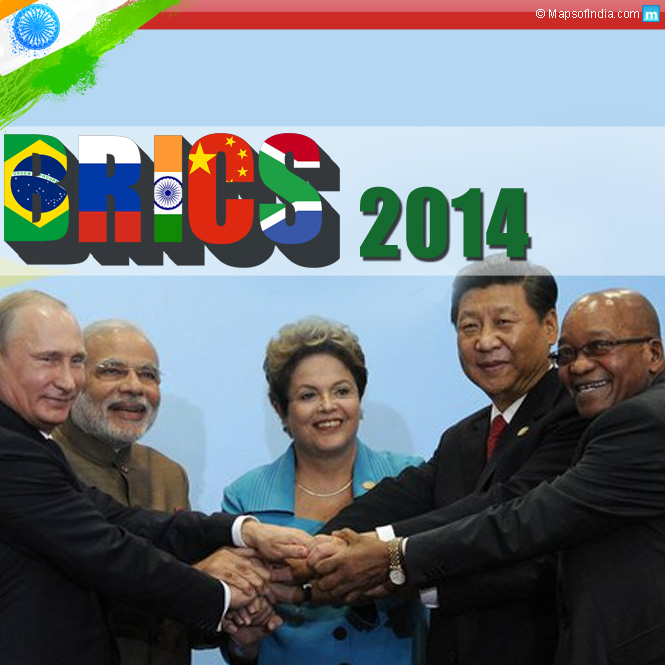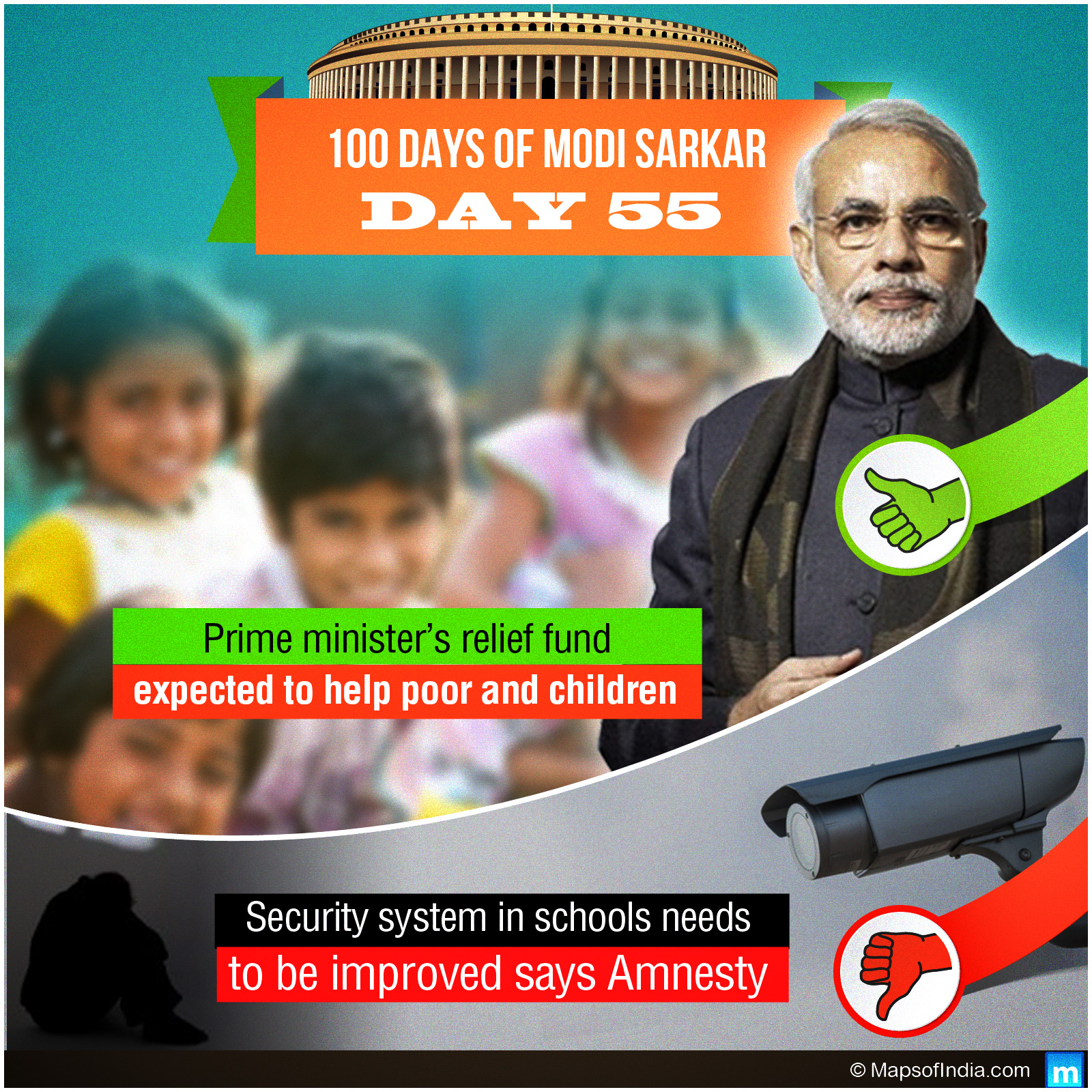Last month, on July 15, 2014, Dilma Rousseff (President of Brazil), Vladimir Putin (President of Russia), Narendra Modi (Prime Minister of India), Xi Jinping (President of China), and Jacob Zuma (President of South Africa) signed a historic agreement at Fortaleza, Brazil, agreeing to set up the New Development Bank (NDB) or simply the BRICS Bank.
What is the BRICS?
In 2001, when Goldman Sachs’ chief economist, Jim O’Neil suggested that Brazil, Russia, India, and China were the four nations with the fastest growing economies in the world and that their potential to emerge as economic superpowers was immense, the statement seemed incredulous and was scoffed at by many western nations. O’ Neil suggested the acronym BRIC for these nations. In 2009, the BRIC countries met for the first time and formed a forum to showcase these nations as serious investment options for global institutional investors to consider. In 2011, the addition of South Africa to the group added to the pool of resources and the BRICS slowly started to catch international attention due to their progress, development, and cohesion. Accounting for about 25% of the world’s area and 40% of the world’s population, the aspirations of the BRICS have grown and the group now attempts to present a united and cohesive front in matters of international politics.
Setting up the NDB
The key focus of the BRICS Bank will be lending to support infrastructure projects and other development projects primarily in these five nations. Apart from this, it shall also aid other sustainable private and public projects in developing nations, by providing loans and guarantees, participation in equity and financial markets. The bank has an authorized lending limit of up to USD 34 billion each year.
The NDB has been set up by the BRICS nations with a capital investment of USD 50 billion with each of the five member countries contributing an equal $10 billion. Over time this capital is to be increased to $100 billion, though no member can increase its share without the others’ agreement. Apart from this, the bank will also handle a Contingent Reserve Arrangement – a fund of USD100 billion that may be used to provide assistance to any member nation in financial crisis.
Who’s Who?
After a long deliberation between New Delhi and Shanghai, the latter was chosen as the headquarters of the NDB. The bank’s first president will be an Indian. Russia bagged the position of the first chairman of the board of governors, while the first chairman of the board of directors at the NDB is to be Brazilian. South Africa will host the Regional Centre of the Bank. While the BRICS are open to other developing nations joining the bank, the investment capital of the BRICS will not be allowed to fall below 55%.
Rivaling global financial institutions
In the past few decades developing countries have been playing an increasingly important role in the growth of the global economy. These countries have, however, complained that international financial institutions such as World Bank and IMF do not reflect their growing stature. Both the World Bank and the IMF are based in Washington. The World Bank president is always appointed by the US while the IMF head is always appointed by the major European nations.
Voting at the 70 year old IMF is based on a quota system. Each nation is assigned a voting power value or quota which reflects the country’s contribution to the global economy, measured by its GDP. This quota has not been revised in a long time despite the relative change in the contribution of nations to the global GDP. China, for example, holds a 5% voting quota despite its contribution reaching over 10% to the global GDP. The BRIC nations hold a disproportionately low vote at the IMF, a fact that has been begrudged by these nations for a long time. The US holds about 17% voting power at the IMF. The reforms required to increase the voting quota of the BRICS at the IMF are long overdue. In 2011, the BRICS had sought the election of a non-European Managing Director – a demand that was denied by the election of the French Finance Minister, Christine Lagarde. The US still wields the voting power required to veto any IMF proposals requiring a supermajority of about 85%.
Such disparity at the IMF and the World Bank led to the creation of the BRICS Bank. In a joint statement, the BRICS leaders said, “International governance structures designed within a different power configuration show increasingly evident signs of losing legitimacy and effectiveness. We believe the BRICS are an important force for incremental change and reform of current institutions toward more representative and equitable governance.”
NaMo and the NDB
Critics of the newly elected Prime Minister of India, Mr. Narendra Modi have been quick to pick apart his inability to secure India as the NDB’s headquarters as a major failure. Furthermore, the fact that the headquarters is now to be in China, one of India’s main economic rivals, is another point of contention. Many economists, however, argue that the breakthrough of establishment and India securing the first presidency, are just as important for the country. They add that the fact that these were achieved by NaMo is a feather in his cap.
Challenges
The nascent NDB is likely to face a number of challenges. The BRICS members do have diverging, often conflicting, interests. India and China have a long history of territorial disputes and economic rivalries that need to be settled if the bank is to be run successfully. It remains to be seen if China shall use the bank as a platform to promote its own national interests instead of economic cooperation and all-round growth. What also remains to be seen is Russia’s ultimate stand over the Ukraine issue. Antagonizing the US and the EU nations is certainly not in the best interests of the NDB.
Critics of the NDB have also been quick to point out that the growth rates of the BRICS nations have slowed down in recent years. Even China, which seemed quite unstoppable, a couple of years ago, seems to be experiencing a slower economic growth due to a number of economic factors. This, however, does not negate that these nations are united and firm in their developmental agenda and looking at better standards of living for their citizens – a goal that justifies the formation and functions of the BRICS Bank.
The path ahead…
The NDB does not currently challenge the liberal economic order maintained by the IMF and the World Bank. A liberal international economic system works well to the advantage of both India and China. The inception of the BRICS Bank is a wakeup call for both the IMF and the World Bank to wake up and implement long overdue reforms. Such reforms shall only be an attempt at transparent functioning of these institutions which are powerful players in the international economy. It is very likely that in the short run we shall see a complementary relationship develop between the BRICS Bank and the World Bank and IMF. Long term rivalry, though not ruled out, is highly unlikely. In the near future, however, infrastructure shall remain the focus of developing nations – a need that the NDB shall cater to. The establishment of the NDB demonstrates the vibrant dynamics of the BRICS nations and the viability of their economic growth against all skepticism from the west.
Read More:
Bandhan Bank: A New Entrant in the Banking Sector
Indian Banking Sector Is Spreading Its Wings
Modi’s Vision for Banking Industry
Payment Banks: An Evolution in the Banking Sector
Is Investing in Bank Equity a Safe Proposition?
Home Loan: Frequently Asked Questions
Banks and Borrowers – The Unholy Alliance
How Technology Can Help in Making Rural Banking Profitable
RBI reduces free ATM withdrawals in metro cities
RBI’s Battle Against Inflation
Jan Dhan Yojana – An Era Of Financial Inclusion Begins





